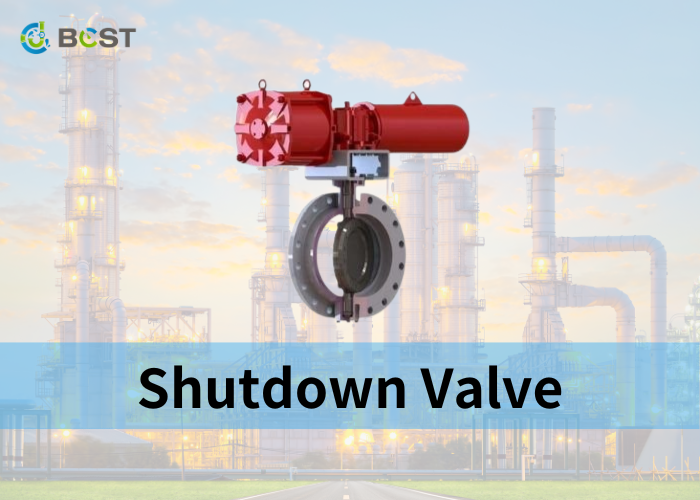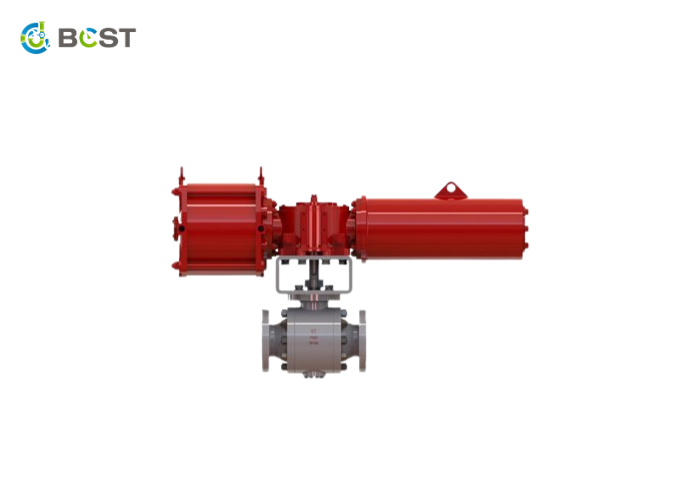
In the intricate world of industrial systems and safety measures, there exists a vital component that often operates quietly in the background, safeguarding against potential disasters. These unsung heroes are known as shutdown valves. But what exactly are shutdown valves, and how do they work? In this blog, we will delve into the crucial role that shutdown valves play in various industrial applications and explore the mechanisms behind their rapid and precise response to emergencies. Join us as we uncover the inner workings of these critical safety devices and their indispensable role in ensuring the integrity and security of numerous industries.
What is a Shutdown Valve?
A shutdown valve, often called an emergency shutdown valve (ESDV) or an emergency isolation valve (EIV), serves as a frontline defense mechanism across various industrial sectors. Its primary mission? Stopping the flow of liquids or gasses quickly and decisively in response to severe conditions or emergencies. Let’s take a closer look at why this proactive strategy is so important.
The Anatomy of a Shutdown Valve
Actuator: The actuator is the muscle that drives the valve’s action, either opening or closing it. It can be powered by electricity, pneumatics, hydraulics, or by hand.
Valve Body: The valve body is a sturdy enclosure housing all the essential internal components. It is designed to handle high pressures and demanding operating situations.
Trim: The trim consists of several internal parts, such as the valve stopper and seat, that together govern the flow of fluids or gases.
Positioner: A positioner may be added to the valve configuration in some applications, precisely adjusting the valve’s position based on external signals. This improves precision and responsiveness.
What is the Role of a Shutdown Valve?
A shutdown valve’s principal function is to assure safety and protect important assets. Here’s a closer look at how it accomplishes these essential goals:
Swift Emergency Response: When the system detects abnormal conditions such as excessive pressure, elevated temperature, or breaches, the shutdown valve swings into action, immediately closing to isolate the problem. This prompt action keeps the situation from growing further.
Environmental Safeguarding: A shutdown valve is an environmental guardian in industries where hazardous materials are handled, preventing leaks or spills that could harm ecosystems.
Asset Protection: By averting catastrophic failures, shutdown valves shield valuable equipment, curb downtime, and save maintenance costs.
Ensuring Human Safety: Shutdown valves prioritize human lives, prevent accidents, and foster a secure working environment.
How Does a Shutdown Valve Work?
The operation of a shutdown valve varies depending on its type and use, but the basic idea remains the same:
Routine Operation: During normal working conditions, the valve remains open, allowing a continuous flow of fluids or gases through the system, which is critical for the smooth execution of industrial processes.
Abnormal Condition Detection: Sensing devices and monitoring systems constantly examine the system’s health. When they detect anomalies like as pressure spikes or temperature spikes, they send signals to the shutdown valve.
Swift Closure: The shutdown valve’s actuator springs into action upon receiving these signals.It quickly moves the internal valve components, typically the valve plug and seat, into the closed position. This rapid action can impede the flow of liquids or gases within the system.
Isolation and Safety: With the valve securely closed, the system is effectively isolated from the abnormal condition, thwarting potential risks or damage. This quick response is crucial in preventing calamities.

Customization and Advance Features of Shutdown Valve
Modern shutdown valves are designed to satisfy specific industry requirements and frequently include advanced features such as:
Fail-Safe Mechanisms: Many shutdown valves include fail-safe devices that ensure automated closure in the event of a power outage or a loss of control signals, increasing reliability.
Remote Monitoring: Remote monitoring capabilities empower operators to check the status of shutdown valves remotely and receive real-time alerts regarding any anomalies, enhancing overall system safety.
Self-Diagnostics: Some valves include self-diagnostic systems that continuously check their condition and function, alerting operators to prospective maintenance requirements.
Redundancy: Critical applications often deploy redundant systems, employing multiple shutdown valves and actuators that work harmoniously to ensure fail-safe operation, adding an extra layer of security.
Conclusion
In conclusion, shutdown valves are vital in industrial and safety-critical systems that prevent fluid or gas flow during emergencies. They safeguard applications like oil and gas pipelines and nuclear facilities. These valves operate swiftly in response to triggers like abnormal pressure or temperature, preventing potential disasters and saving lives. Shutdown valves come in different types, each suitable for specific conditions. What sets them apart is their ability to function autonomously, enhancing safety and efficiency by responding faster than human operators. These valves represent the fusion of engineering and automation, crucial in protecting people, the environment, and assets in modern industries.






